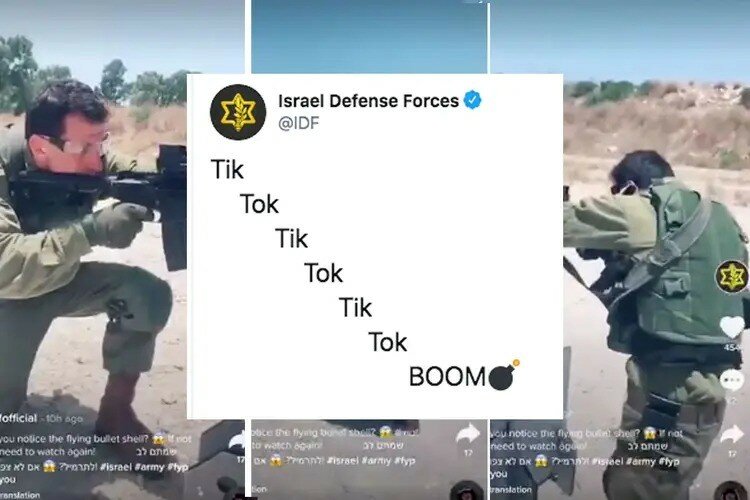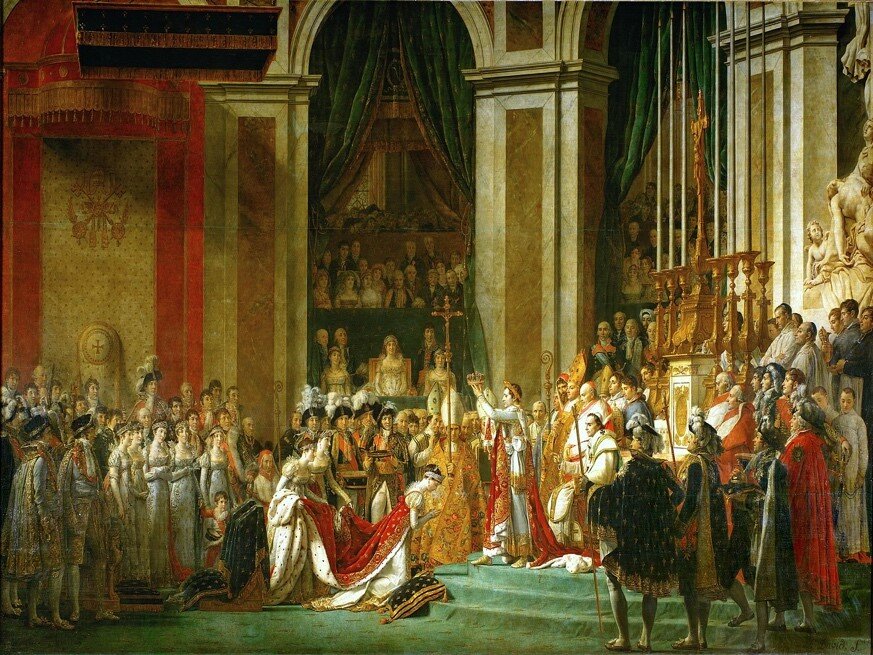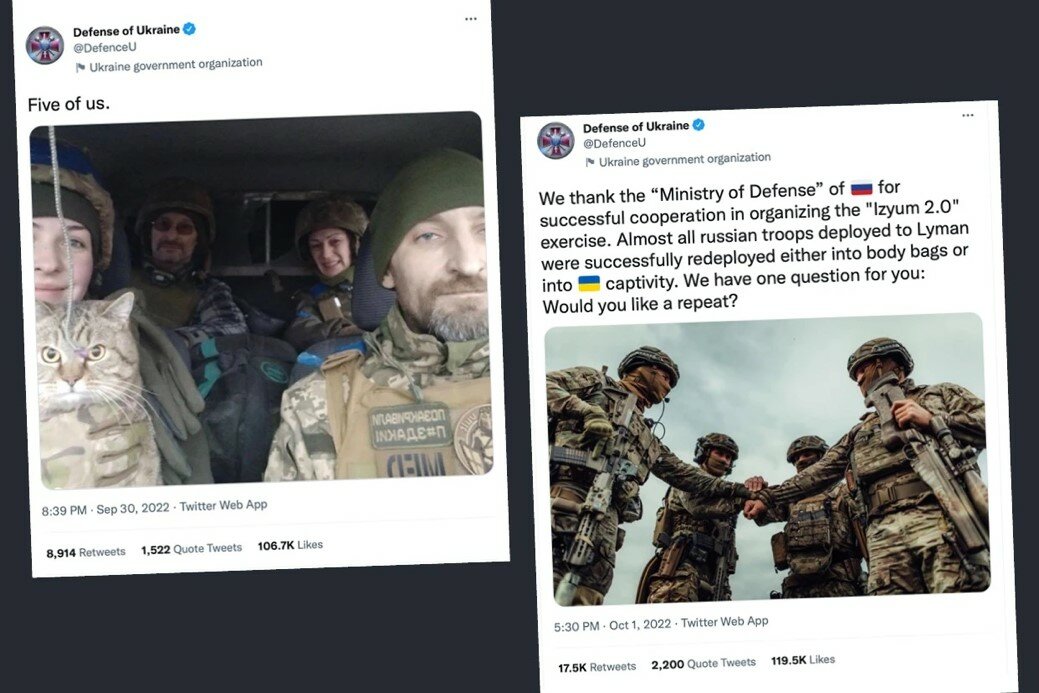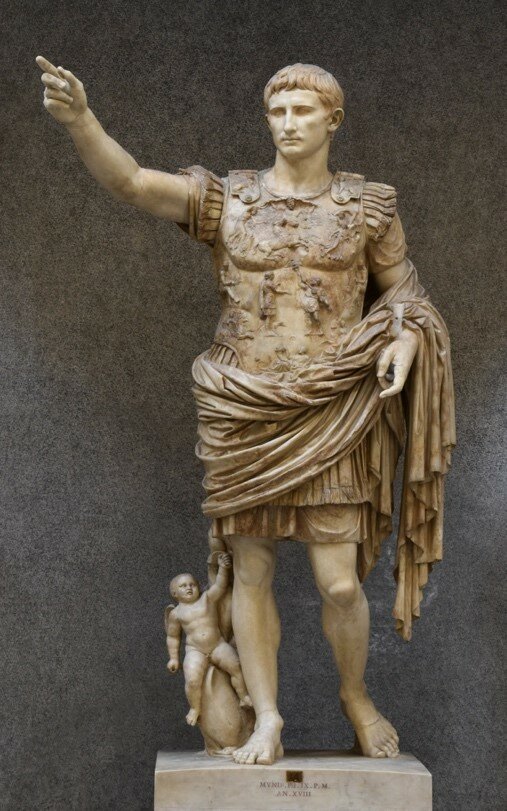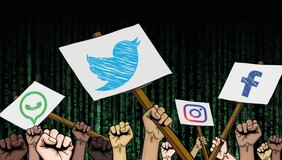Warfare propaganda: From sculptures to tweets
From ancient civilizations to contemporary conflicts, the utilization of propaganda has been a pervasive element in the realm of warfare. It has long served as a powerful tool for shaping public opinion, disseminating narratives, and manipulating the course of battles. However, in our increasingly interconnected world, the emergence of social media has ushered in a new era of information warfare. With the click of a button, these digital platforms have revolutionized the dissemination of information, enabling both state and non-state actors to wield unprecedented influence and control over public discourse. In this article, we embark on an exploration of the dynamic relationship between propaganda and warfare, uncovering the profound implications of social media platforms in shaping conflicts and redefining the boundaries of propaganda in contemporary times.
Propaganda’s ambition is to make people sacrifice their personal wishes and even their own lives for something bigger and, presumably, more important (Laskin, A. V. 2019) In the realm of ancient warfare, the Roman Empire was renowned for the effective use of it. Emperors and military leaders recognized the importance of public support and employed various tactics to rally citizens and soldiers alike. For instance, Roman triumphal processions served as grand spectacles of propaganda; these events not only solidified the ruler's legitimacy but also instilled a sense of national pride and unity among the Roman populace. This is explicitly seen during Augusts’ rule; until his reign no one in Rome had come close to creating a personality cult (Steinfeld, J. (2017). During the Napoleonic era, Napoleon Bonaparte demonstrated exceptional skills in utilizing propaganda as a tool of psychological warfare. Recognizing the importance of controlling public perception, he showed an inflexible instinct to regulate publications and to censor any expression of opposition (Forrest A, 2004) ; Only books officially approved by the state could be distributed; he also ensured that every great event of his rule would be embodied to prosperity through paintings and news reports. By financing all the artists that would write or paint in support of the regime and drastically silence any type of criticism, he secured his legitimacy. However, it was during World War II that propaganda reached new heights, particularly with the rise of totalitarian regimes. Nazi Germany, under the leadership of Adolf Hitler, operated an extensive and sophisticated propaganda machine. Utilizing radio broadcasts, newspapers, films, and mass rallies, the Nazi regime disseminated propaganda that aimed to manipulate the public’s moral values and consolidate his authoritarian power as necessary and beneficial for the German nation. This machinery was essential in promoting Aryan supremacy, vilifying Jews, and rallying support for the invasion of other nations.
Historically, propaganda was employed to cultivate popularity and foster admiration for certain individuals or regimes, among populations with limited access to information; often utilizing art as a tool for settling specific agendas. However, the primary means of controlling information and influencing public perception was through censorship, allowing authorities to regulate access to information. But In today's digital age where information spreads rapidly and without regulation, propaganda has taken on a new form. Rather than serving as a tool for creating narratives, propaganda is often employed as a means of disinformation, this involves deliberately spreading false information to deceive and manipulate individuals. But the unrestricted nature of social media has posed new challenges for the identification of propaganda; being an influential communication tool, propaganda methods focus on conducting information warfare. In an attempt to silence other narratives, political actors massively spread one-sided information that solely promotes their own point of view, aiming to manipulate public opinion in their favor. These impartial viewpoints are extensively promoted through social media and media outlets, effectively reducing the visibility of alternative perspectives on the same conflict. The cases of the Israel Defense Forces (IDF) and the ongoing conflict in Ukraine serve as illuminating examples of how social media is employed in modern warfare. The IDF has been at the forefront of employing social media as a key component of its military operations. During conflicts such as Operation Pillar of Defense in 2012 and Operation Protective Edge in 2014, the IDF actively utilized platforms like Twitter, Facebook, and YouTube to disseminate real-time updates, share videos and images, and shape public perceptions. The IDF employed a multi-faceted approach, combining official statements, eye-catching visuals, and targeted messaging to influence global public opinion. By providing immediate and direct access to information, the IDF aimed to control the narrative, counteract misinformation, and garner international support.
Similarly, the Ukraine conflict serves as another notable example of the use of social media in warfare. Both Ukrainian government forces and pro-Russian groups engaged in a fierce battle not only on the physical battleground but also in the realm of information warfare. Social media platforms, such as and Vkontakte (a popular Russian social network), were used to disseminate propaganda, manipulate public sentiment, and shape narratives by both bands. Furthermore, apps like Twitter has been filled with hashtags utilized to spread disinformation; fake accounts, known as "trolls," were deployed to fuel divisions, and intensify the psychological impact of the war by amplify existing tensions. Moreover, social media platforms have become a prominent medium for targeted messaging by military personnel, who utilize these platforms to showcase their daily experiences in the army, perpetuate discriminatory prejudices against their adversaries, and mobilize support for their respective aims.
The integration of social media in modern warfare represents a transformative shift in the information landscape, providing unprecedented opportunities for mobilization and global influence through first-hand testimonies. With its rapidity, accessibility, and interconnectivity, social media has emerged as a potent tool for spreading unfiltered information, making it highly effective in shaping perceptions and facilitating the amplification of radical opinions. This highlights the critical importance of promoting media literacy and critical thinking as well as the establishing of robust fact-checking mechanisms on our daily life on the internet, to counter the impact of propaganda and disinformation.
Further reading:
How the Roman Empire's propaganda inspired Bonaparte, Mussolini and Hitler
More on the use of social media by militar personnel.
Social media as a tool for warfare information
